Construction Cost Escalation
Table of Contents
Introduction of Construction Cost Escalation
Construction cost escalation in an Engineering, Procurement, and Construction (EPC) project refers to the increase in project costs over time. This escalation can occur due to various factors and has significant implications for project budgets and timelines. Several key reasons contribute to construction cost escalation in EPC projects:
Inflation:
General economic inflation leads to the rising cost of materials, labor, and services, directly impacting project expenses.
Fluctuating Material Costs:
Prices of construction materials, such as steel, cement, and oil, are subject to market fluctuations, causing unpredictable cost variations.
Labor Shortages:
Skilled labor shortages can increase wage demands, leading to higher labor costs, especially in specialized construction projects.
Regulatory Changes:
Changes in regulations, safety standards, or environmental requirements might necessitate costly project modifications, impacting the overall budget.
Currency Exchange Rates:
For international EPC projects, fluctuations in currency exchange rates can affect the cost of imported materials and equipment.
Delays and Project Extensions:
Construction delays can result in increased costs due to extended labor, equipment, and overhead expenses.
Unforeseen Site Conditions:
Unexpected site challenges, such as unstable soil or hidden environmental issues, can require costly modifications to the original project plan.
Technological Advancements:
Changes in technology might require project redesigns, additional equipment, or upgraded materials, increasing project costs.
Geopolitical Factors:
Political instability, trade disputes, or natural disasters in supplier regions can disrupt the supply chain and inflate material costs.
Market Demand:
High demand for construction projects in a specific region can lead to increased costs as contractors and suppliers have more bargaining power.
To mitigate construction cost escalation, EPC project managers often employ strategies such as accurate initial cost estimation, contingency planning, continuous monitoring of market trends, negotiating fixed-price contracts with suppliers, and implementing efficient project management practices. Proactive risk management and regular cost assessments are crucial to ensuring that the project stays within budget despite potential cost escalation challenges.
Price Adjustment for the Work
The Contract price shall be adjusted for increase or decrease in rates and price of labour, cement, steel, plant & machinery, bitumen, fuel & lubricants, and other material inputs in accordance with the principles procedures & formulae specified below:
Price adjustment shall be applied on completion of specified stage of the respective item of work in accordance with Schedule-H
Adjustment for each item of work/stage shall be made separately
The following expressions and meanings are assigned to the value of the work done:
- RW = Value of work done for the completion of a stage under
- (a). Road works
- (b). Other Works
- BR = Value of work done for the completion of a stage under the items Major Bridge & Structures Schedule-H
Price Adjustment for changes in cost shall be paid in accordance with the following formulae:

Where,
VRW=Increase or decrease in the cost of road works/other works during the period under consideration due to changes in the rates for relevant components as stated in sub-paragraph (5).
VBR= Increase or decrease in the cost of Major Bridges and Structures during the period under consideration due to changes in the rates for relevant components as stated in sub-paragraph (5).
PB, PC, PL, PM, and PS are the percentages of bitumen, cement, labour, other materials, and steel/components (including strands and cables) respectively for the relevant item as stated in sub-paragraph (5).
PA is the percentage of Plant, machinery and spares component for the relevant item as stated in sub-paragraph (5).
Ao = The wholesale price index as published by the ministry of commerce & industry, Government of India (hereinafter called “WPI”) for “Manufacturer of machinery for mining, quarrying & construction” for the month of the Base Date.
Ai = The WPI for Construction Machinery for the three months prior to the month to which the IPC relates.
Bo = The official retail price of Bitumen at the nearest refinery at Panipat, on the base date.
Bi = The official retail price of Bitumen at nearest refinery at Panipat, on the first day of the month three months prior to the month to which the IPC (Interim Payment Certificate) relates.
Co = The WPI for Ordinary Portland Cement for the month of the Base Date.
Ci = The WPI for Ordinary Portland Cement for the month three months prior to the month to which the IPC relates.
Fo = The official retail price of High Speed Diesel (HSD) oil at the existing consumer pump of Indian Oil Corporation (IOC) in the State where Project run on the Base Date.
Fi = The official retail price of HSD at the existing consumer pump of IOC in the State where Project being executed on the first day of the month three months prior to the month to which the IPC relates.
Lo = The consumer price Index for Industrial Workers for the State circle where project is run, published by labour bureau, Ministry of Labour, Government of India, (hereinafter called “CPI”) for the month of the Base Date.
Li = The CPI for the month three months prior to the month to which the IPC relates.
Mo = The WPI for All Commodities for the month of the Base Date.
Mi = The WPI for All Commodities for the month three months prior to the month to which the IPC relates.
So = The WPI for Mild Steel-Long Products for the month of the Base Date.
Si = The WPI for Mild Steel-Long Products for the month three months prior to the month to which the IPC relates.
5. The following percentages shall govern the price adjustment of the Contract Price:

Example:
a). Base Date Calculation-
- Due Date of Bid (Tender) Submission = 16.06.2022
- At least 28 Days preceding Date = 16.06.2022 – 28 Days = 19.05.2022
- Last Date of Calendar Month = 31.05.2022
- Gap Between Last Calendar Month & Bid Submission Date = 16.06.2022 – 31.05.2022 = 16 Days (Hence criteria of 28 days gap is not fulfil so base date should be 31.04.2022
b). Find Price Indices (for base date):
- We can find Cement, Steel, All Commodities, Plant Machinery & Spares of price indices from “Office of economic Adviser” see the steps below
For Cement (Base Date- 31.04.2022)--Co

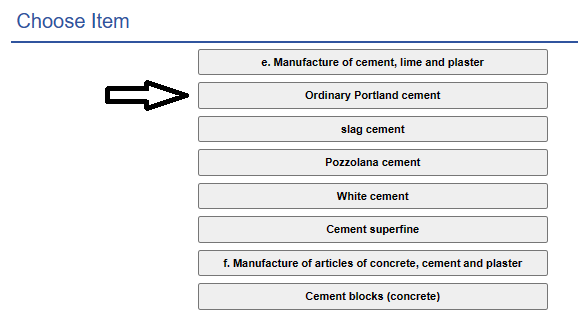

For Steel (Base Date - 31.04.2022)--So

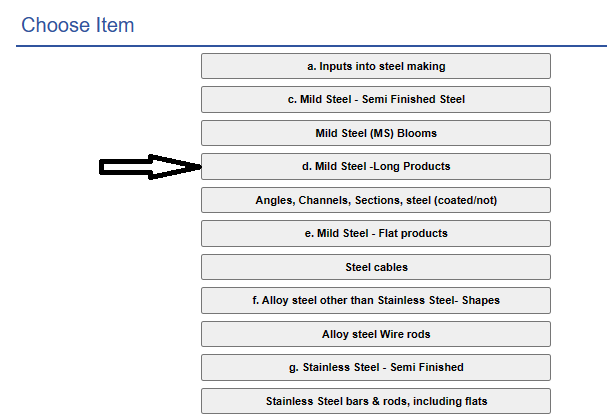

For All Commodities (Base Date - 31.04.2022)--Mo

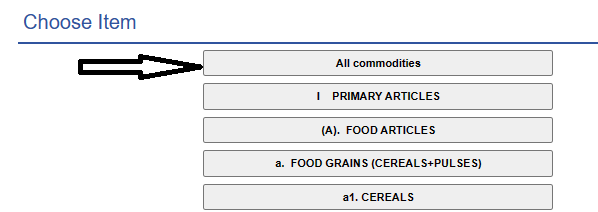

For Machinery (Base Date - 31.04.2022)--Ao

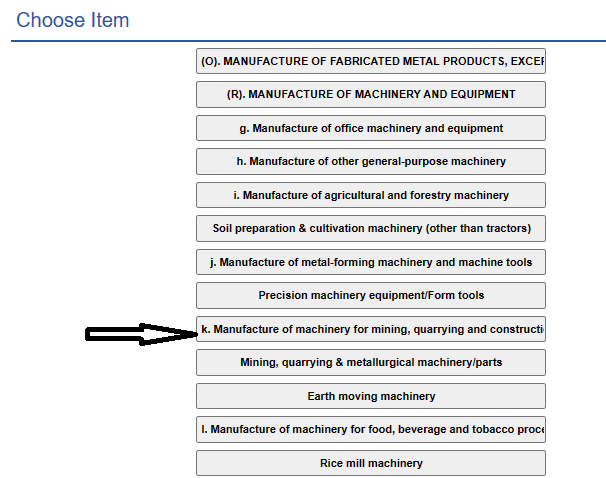

For Labour (Base Date - 31.04.2022)--Lo
Use Linking Factor 2.88 to Update Price Index

Note:
- In the context of cost escalation in the construction or economic field, a “linking factor” refers to a multiplier or adjustment that is used to account for changes in costs over time. This factor is applied to adjust the cost of a project or a set of goods or services from one point in time to another. It helps in reflecting the impact of inflation or changes in market conditions on the original cost.
- The linking factor is typically expressed as a percentage or a specific numerical value, and it is used to update or escalate the cost of a project or an item to bring it in line with current market conditions. Escalation is important because prices for materials, labor, and other resources can change over time due to inflation, supply and demand fluctuations, and other economic factors.
- For example, if you are estimating the cost of a construction project that is scheduled to begin in two years, you might apply a linking factor to the current cost estimate to account for the expected increase in construction material prices, labor rates, and other expenses over that two-year period.
- The linking factor is typically determined based on economic indicators, historical data, and market trends. It helps project planners and economists make more accurate cost projections by taking into consideration the anticipated changes in prices and economic conditions.
For Bitumen (Base Date - 31.04.2022)--Bo
Use Just for Calculation Purpose (Use Bulk Rate for VG-40)
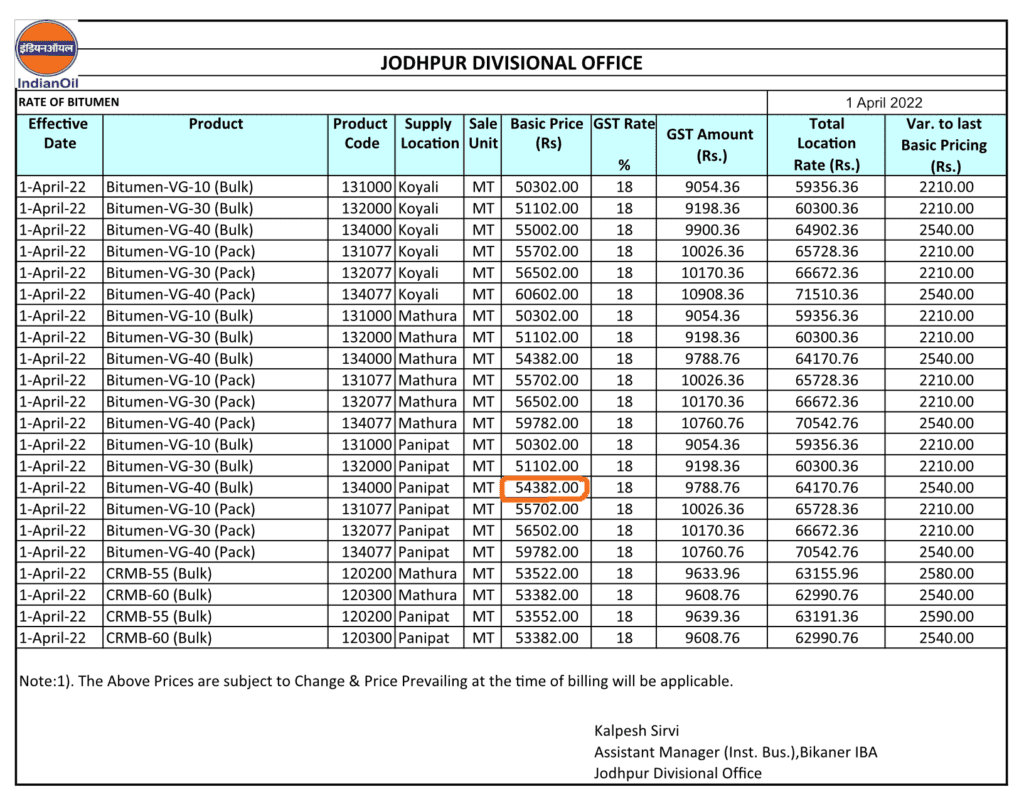
For HSD (Base Date - 31.04.2022)--Fo
Use the local Petrol Pump rates (IOCL-Indian Oil Corporation Limited) applicable in the area where your project is being executed (Suppose Rate is Rs.75.5)
c). Use Same Above Method to use Index Prices on the first day of the month three months prior to the month to which the IPC relates.
Suppose we need to submit our current bill on 01.01.2023; therefore, we will use the price index from 01.10.2022

For All Commodities (Other Material)—Mi

For Ordinary Portland Cement —Ci

For Mild-Steel — Si

For Machinery — Ai

For Bitumen — Bi
For Diesel --- Fi
For HSD (High Speed Diesel) Rate 99.85 (Assume)
For Labour --- LiFor Calculation Sheet Click Here








2 thoughts on “Construction Cost Escalation”